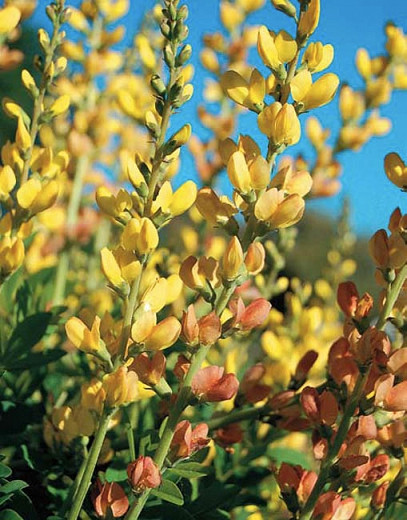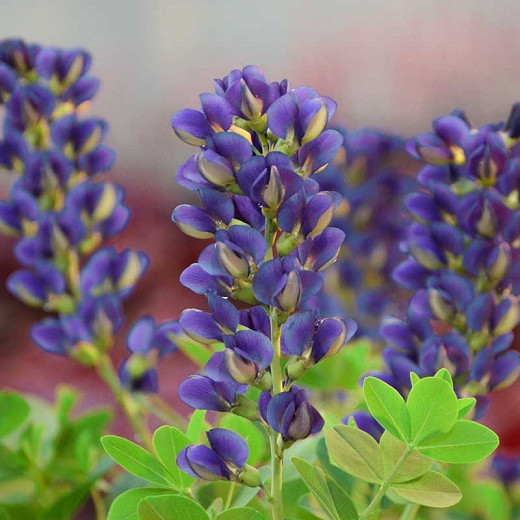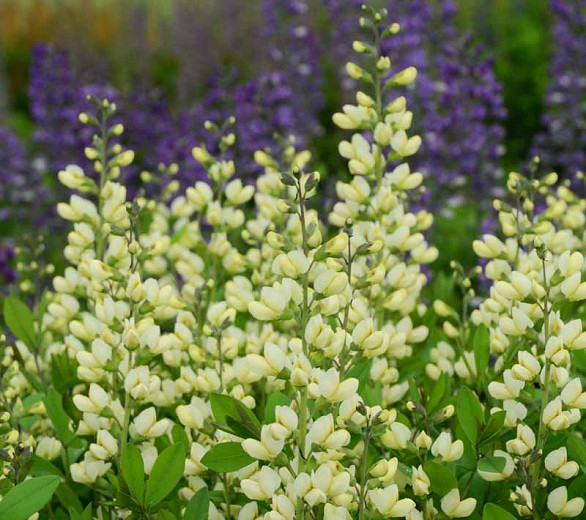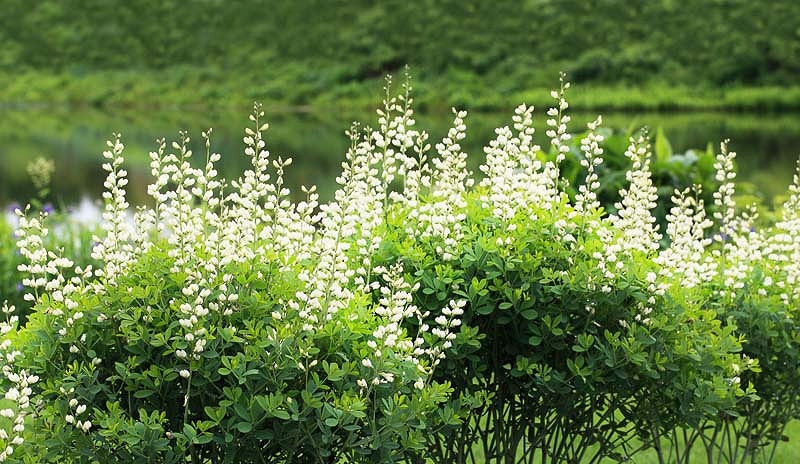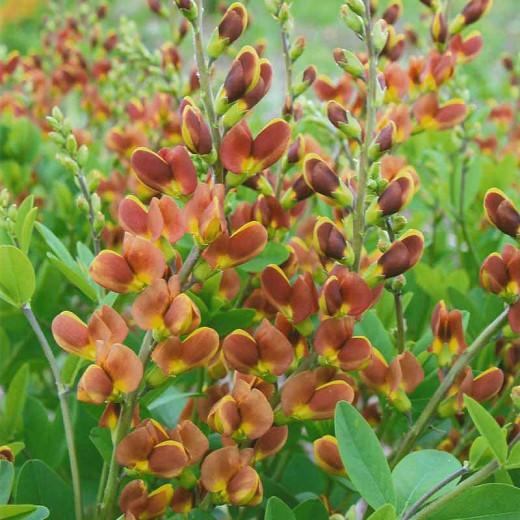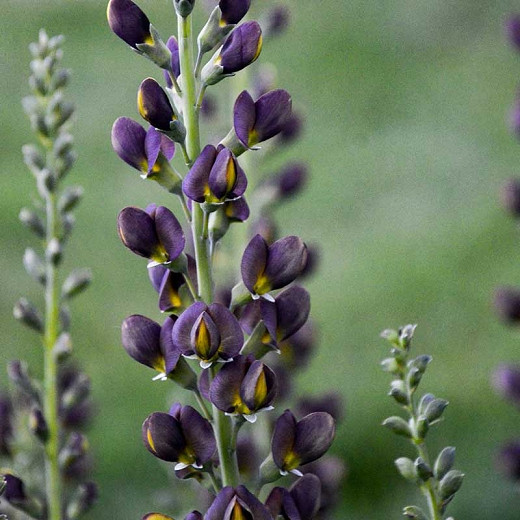Baptisia australis (False Indigo)
Tough and durable, Baptisia australis (False Indigo) is an upright perennial with a long season of interest. In spring, this native to the North American prairies bears spikes of pea-shaped indigo blue flowers, resembling Lupines.
Tough and durable, Baptisia australis (False Indigo) is an upright perennial with a long season of interest. In spring, this native to the North American prairies bears spikes of pea-shaped indigo blue flowers, resembling Lupines. They last for about three weeks and attract butterflies, bees, and hummingbirds. When the flowers fade away, the lovely blue-green, trifoliate leaves remain neat and form a lovely backdrop for the other perennials in the garden. If left untrimmed, the plant forms interesting seedpods turning deep black in the fall and persist into winter.
- Recipient of the Award of Garden Merit of the Royal Horticultural Society and named 'Perennial Plant of the year' in 2010
- Blooming in late spring to early summer, it is an extremely valuable addition to the garden and its seedpods help create lovely winter decorations.
- Spreads by underground rhizomes and typically grows up to 3-4 ft. tall and wide (90-120 cm).
- Its requirements are fairly simple: Full sun in average, dry to medium, well-drained soils. Although it will grow in some shade, this plant tends to become leggy and may require staking. Tolerates poor soils and drought. Do not disturb once established as it develops a deep taproot that is easily damaged if you try to transplant it.
- Baptisia is rarely bothered by deer as they consider it unpalatable and is rabbit resistant
- Attracts scores of butterflies and hummingbirds
- Not susceptible to pest damage or disease
- Looks stunning in beds and borders, cottage gardens, prairies or meadows, and native plant gardens. Great as a specimen plant or in small groups.
- Propagate by seed sown in pots in a cold frame as soon as the seed is ripe or propagate by division in early spring.
- Trimming foliage after bloom helps maintain a rounded plant appearance, but you will miss out on the attractive seed pods which are great to use in dried flower arrangements.
- If the seed pods are left over winter, they will produce little seedlings, but they are easy to pull out.
Requirements
| Hardiness | 3 – 9 |
|---|---|
| Heat Zones | 1 – 9 |
| Climate Zones | 1, 1A, 1B, 2, 2A, 2B, 3, 3A, 3B, 4, 5, 6, 7, 8, 9, 10, 11, 12, 13, 14, 15, 16, 17, 18, 19, 20, 21, 22, 23, 24 |
| Plant Type | Perennials |
| Plant Family | Baptisia – False Indigo |
| Exposure | Full Sun |
| Season of Interest | Spring (Late)Summer (Early) |
| Height | 3' – 4' (90cm – 120cm) |
| Spread | 3' – 4' (90cm – 120cm) |
| Spacing | 36″ – 48″ (90cm – 120cm) |
| Water Needs | Low, Average |
| Maintenance | Low |
| Soil Type | Loam, Sand |
| Soil pH | Acid, Neutral |
| Soil Drainage | Well-Drained |
| Characteristics | Dried Arrangements, Cut Flowers, Plant of Merit, Showy |
| Native Plants | United States, Midwest, Illinois, Indiana, Iowa, Kansas, Michigan, Missouri, Nebraska, Ohio, Northeast, Connecticut, Massachusetts, Maryland, New Hampshire, New Jersey, New York, Pennsylvania, Vermont, Southeast, Alabama, Arkansas, Georgia, Kentucky, North Carolina, Tennessee, Virginia, West Virginia, Southwest, Texas |
| Tolerance | Clay Soil, Deer, Drought, Rabbit, Dry Soil, Rocky Soil |
| Attracts | Bees, Butterflies, Hummingbirds |
| Garden Uses | Banks and Slopes, Beds and Borders |
| Garden Styles | Informal and Cottage, Prairie and Meadow |

